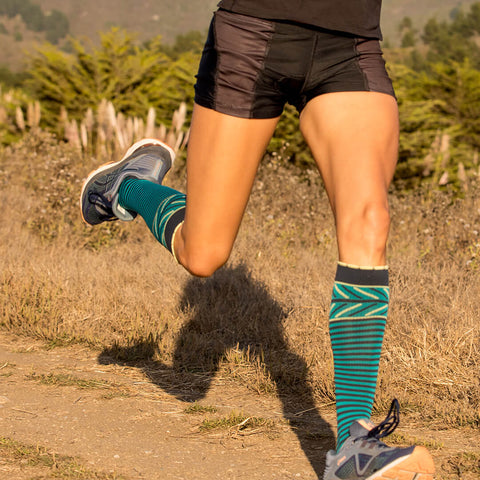All About The Calf Muscle

The calf muscle is a powerhouse of the lower body, playing a crucial role in movement, stability, and overall circulatory health. The calf muscle plays a significant role in maintaining optimal vascular function and overall well-being.

Let's delve into the anatomy of the calf muscle and its functions. The calf consists of two main muscles: the gastrocnemius and the soleus. The gastrocnemius is the larger, more superficial muscle that forms the prominent bulge of the calf. It crosses both the knee and ankle joints, allowing for movements such as plantarflexion (pointing the toes downward) and flexion of the knee. The soleus, situated beneath the gastrocnemius, primarily assists in plantarflexion and helps maintain posture and stability while standing.
But why is the calf muscle so important for circulation? The answer lies in its role as a secondary pump for blood flow, particularly in the lower extremities. When you engage your calf muscles through activities like walking, running, or even calf raises, the muscles rhythmically contract and relax. This rhythmic contraction and relaxation act as a "muscle pump," aiding in the circulation of blood back towards the heart. This process is so important, the calf is often referred to as “the second heart.”

Here are several reasons why the calf muscle's contribution to circulation is vital:
Venous Return: Veins in the lower legs, especially the deep veins, carry deoxygenated blood back to the heart. The calf muscle squeezes the veins and propels blood upward against gravity. This helps prevent blood from pooling in the lower extremities, reducing the risk of conditions like varicose veins and deep vein thrombosis (DVT).
Lymphatic Drainage: In addition to blood circulation, the calf muscle's pumping action also aids in lymphatic drainage. The lymphatic system plays a crucial role in immune function and fluid balance, and the calf muscle contractions help facilitate the movement of lymph fluid through lymphatic vessels, promoting detoxification and waste removal from tissues.
Preventing Edema: Edema, or swelling, can occur when excess fluid accumulates in tissues, often leading to discomfort and reduced mobility. Proper calf muscle function helps prevent edema by promoting fluid movement from the lower extremities back into circulation, maintaining a healthy fluid balance in the body.

Muscle Tone and Strength: Strong, toned calf muscles not only support circulation but also contribute to overall lower limb function and stability. Well-developed calf muscles can improve balance, reduce the risk of injuries, and enhance athletic performance in activities that require lower body strength and agility.
Cardiovascular Health: The calf muscle's role in circulation is integral to cardiovascular health. Efficient blood flow helps deliver oxygen and nutrients to tissues, remove metabolic waste products, and maintain optimal organ function. By promoting healthy circulation, the calf muscle supports cardiovascular well-being and overall vitality.
It's important to note that maintaining healthy calf muscles involves a combination of regular physical activity, proper hydration, balanced nutrition, adequate rest, and compression socks. Exercises that target the calf muscles, such as calf raises, walking, jogging, and cycling, can help strengthen these muscles and improve their pumping efficiency.

Compression socks play a supportive role in enhancing the function of the calf muscles. The socks apply graduated pressure to the lower legs, enhancing the calf muscle pump mechanism. By promoting more efficient circulation, compression socks reduce the workload on the calf muscles during prolonged standing or physical activity, allowing them to function optimally and reducing the risk of fatigue, strain, and DVTs. Additionally, compression socks provide gentle compression around the muscles, which can aid in muscle recovery, reduce post-exercise soreness, and support overall muscle health. For individuals with conditions like shin splints or calf cramps, compression socks can offer targeted support and alleviate discomfort during movement. Overall, compression socks complement the natural function of the calf muscles, making them a valuable addition to a comprehensive approach to circulatory health and muscle performance.
In conclusion, the calf muscle plays a vital role in circulation. Its rhythmic contractions support cardiovascular health, muscle tone, and overall lower limb function. Incorporating calf-strengthening exercises, adopting a healthy lifestyle, and wearing compression socks can optimize calf muscle function and contribute to improved circulation and well-being.



Leave a comment